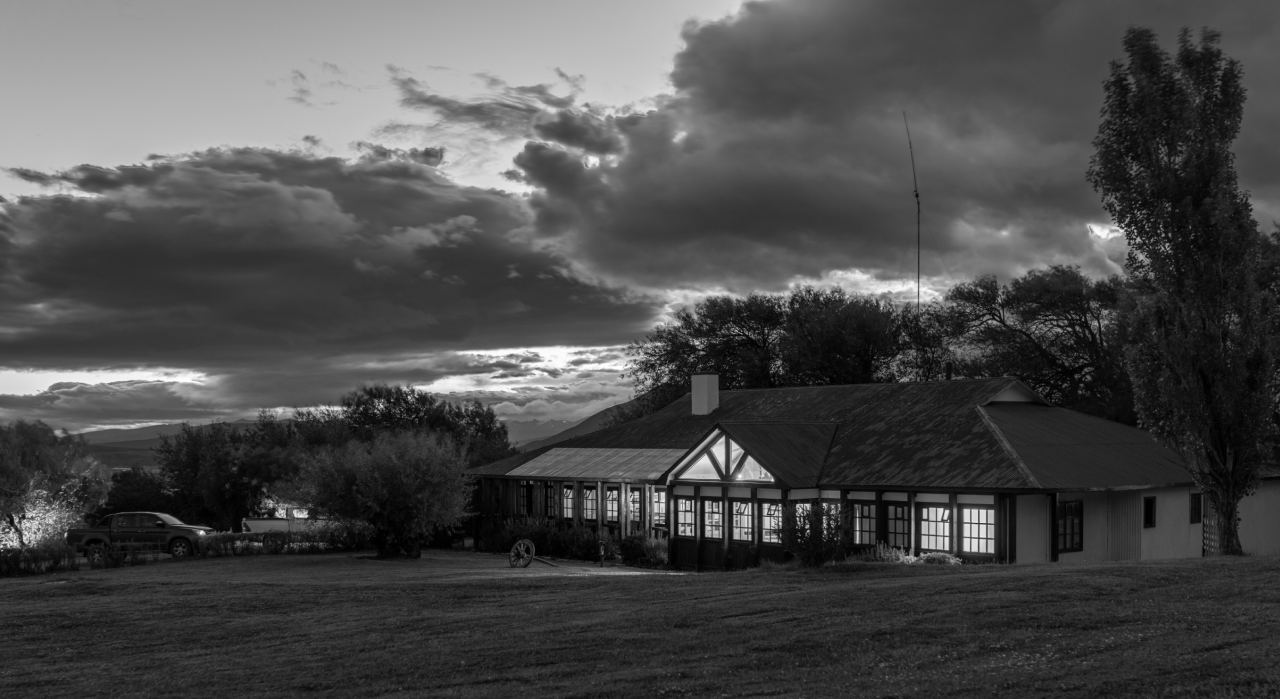22 February 2024

Who are Duncan Campbell and Gladys Grace?
Duncan Campbell and his partner, Gladys Grace, visited Estancia Cerro Guido after many years without setting foot on this land. They are the authors of Patagonia Wild and Free, a book that compiles the writings of William H. Greenwood, one of Patagonia’s pioneers.
Duncan Campbell and Gladys Grace‘s visit took me by surprise. I was informed of their arrival only two days in advance and didn’t know what to expect. Patagonia Wild and Free was one of the first texts I had in my hands when I started working at Estancia Cerro Guido.
I prepared myself as best I could. I studied and read. I even finished the book which, for some reason, I put aside and never had the time to pick it up where I left off. However, I did not know what to expect from their visit.
“What would the Campbell-Graces be like?” was the question that ran through my mind for those two long days. I really had no idea if they were a secretive couple, or else they might chat with us about their research.
Then, the day arrived and I headed to the lounge, where every visitor to Estancia Cerro Guido is welcomed. To my surprise, it was a couple that greets you with a smile from ear to ear and gladly talks to you about their work, books and research.

How did they get to William Greenwood?
In Patagonia, there are magical stories and captivating tales. However, not many writers dedicate themselves to rescue them and capture them in their pages. Instead, it seems that these stories have been lost over the years.
William H. Greenwood is one of those characters of whom, a few years ago, not much was known. He was mentioned in some recovered documents of the time, however, it was at the beginning of the last decade when the authors found out that in Argentina there were old articles that were published by a newspaper of those years.
Of course this was one of the biggest intrigues on my mind. Although they recount the road to Greenwood in one of the book’s appendices, I wanted to hear the story firsthand.
“We were doing research for another of our books, The British Presence [of southern Patagonia]. Visiting certain places, we came across Cañadón de Las Vacas, owned by the Reynards,” Gladys Grace commented.
“Reviewing old documents, we found letters from Greenwood addressed to Reynard, which was an incredible find because we were able to confirm his presence in these lands,” she added. William Greenwood was a partner of Enrique Reynard, a pioneer of the cattle industry in Chilean Patagonia.
The story doesn’t end there. “Of course we kept looking through, excited by what we had just found and wanting more. In that, we caught the transcript of a newspaper article dealing with the Punta Arenas riot written by Greenwood himself,” he told us as we listened with attention.
You don’t always get the chance to hear these stories and they serve as the perfect example to spark the enthusiasm of young researchers, historians and journalists looking to tell an unpublished and original story.
“The article had the source: The Standard, which was an English newspaper published in Buenos Aires. Then, searching a little more, we found out that the University of San Andrés kept copies of these newspapers,” he adds. “About 2014, we went there [U. San Andrés, Bs. As. As.] and found 59 of these articles that had been published between 1900 and 1901, all signed by Greenwood.”
In the framework of any research, you will have successes, setbacks and setbacks. Not everything will ever go as planned. Many times you will feel lost among the thousands and thousands of documents you will have to review, but nevertheless you will never know when you will discover that one document that you will hit the nail on the head.

An Untamed Land and Stories to Tell
Chilean Patagonia is a magical place, rich in flora and fauna unique in the world, where different species live in harmony to form a world-renowned ecosystem.
However, before the big companies and hotels settled in these lands, there were people who saw in these pampas an opportunity for growth and development.
These are the stories that over time have been lost and the task that falls to the new generations is to rescue them. “It is great that young people are interested in the culture and stories that are often lost and that are as much ours as any other,” said Gladys.
Undoubtedly, Patagonia still hides stories that are hidden and that, with a little patience and dedication, will soon come to light.



